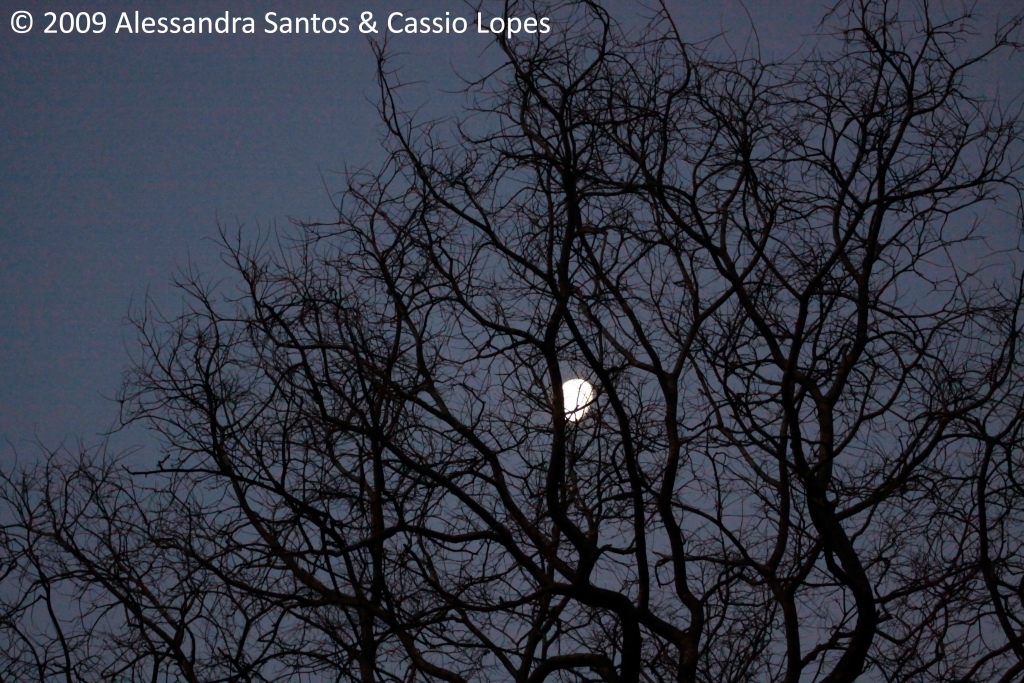
The days in Bandhavgarh start early, very early. We had our wake-up call at 04:45am. At 05:15am we were expected in front of the lodge gate to take our gipsy. Deepak was already in the car and Sujan , the driver, helps us to hop on. We have the car just for us as the lodge is not full – in total we will be 5, the driver, the guide, the ranger (who will join us at the park gate), and the two of us. In addition, Mr. Raj had asked the night before if he could join us in this game drive, and of course we have agreed.
The Main Gate of Bandhavgarh is just a few blocks away from the Nature Heritage Resort lodge, what allow us to be the first ones (if we want), but the exact order of arrival is not that much important to get the routes permits as long as you are within the first 25 jeeps (the maximum allowed in the park). As we arrived in the Tala Gate, we take a place in the queue and Sujan immediately goes to the forest department post to pick up the morning track permit. In the mornings, the route system works as follows: each jeep is assigned to one of the 4 routes (A to D), the gate opens daily at 06:30am for the jeeps and each one must stay on the assigned track until reach a place called Central Point until around 07:30am, where the jeeps must check in and get the checkpoint registration. If a jeep is caught by the rangers in a different track or if they do not show up in the Central Point, the guide and the driver can be punished with a suspension for weeks.
After getting the Route “A” in that morning, just before the gate opened, an official park ranger gets into the jeep – it is mandatory to have a forest department ranger in each car to be the guide and to ensure that the park rules will be followed along the game drive.
Until the gate is opened by the rangers, we stay in the car watching that crazy reunion of guides, drivers and rangers. Deepak and Raj takes the time to tell us histories about the tigers of the park, and explains us the park rules.
Just a couple of seconds before the gate opens, the guides call each other and the drivers jump into their jeeps and start the engines. The game drive starts with the frenzy of the jeeps squeezing themselves through the gate almost pushing each other – really not much different from Delhi’s traffic jams. Better hold on!
The fresh air blows in our faces as when in the time game drive starts in the morning, the park is still in the shade. Our little jeep keeps going on track “A”, tearing the soft mist that floats ahead of us along the road. The sand is soft, and no jeeps have used the tracks before us that morning, so that Deepak and Raj could look for fresh pug marks.
Route “A” takes us West, and Raj explains to us that the main objective is to rush during the first minutes of the game drive in the morning is to go straight to the points where there are chances to see a tiger – this will depend, of course, if any tiger has been seen in the area of the route earlier or in the night before by park ranges – if they get any tip of the rangers and other guides, the plan will be going directly to there to check.
The track follows the border of the park, in a point where there is a stone wall built to try keep the wildlife away from the neighbor village - nothing that will prevent a tiger from passing through, but it will avoid the villagers to take cattle in the park to graze the grass – Raj explains. The road is empty as this track is quite long, and in that moment we had already slowed down to allow following any fresh sign that might indicate the presence of a tiger.
All of a sudden, as the road bended slightly to the right, a dark silhouette appears in the far end of the road – Deepak whispers: “Tiger, down on the road!” – the jeep speeds up to get us there before the animal disappears, and we quickly reach the spot, or should I say, the stripes…
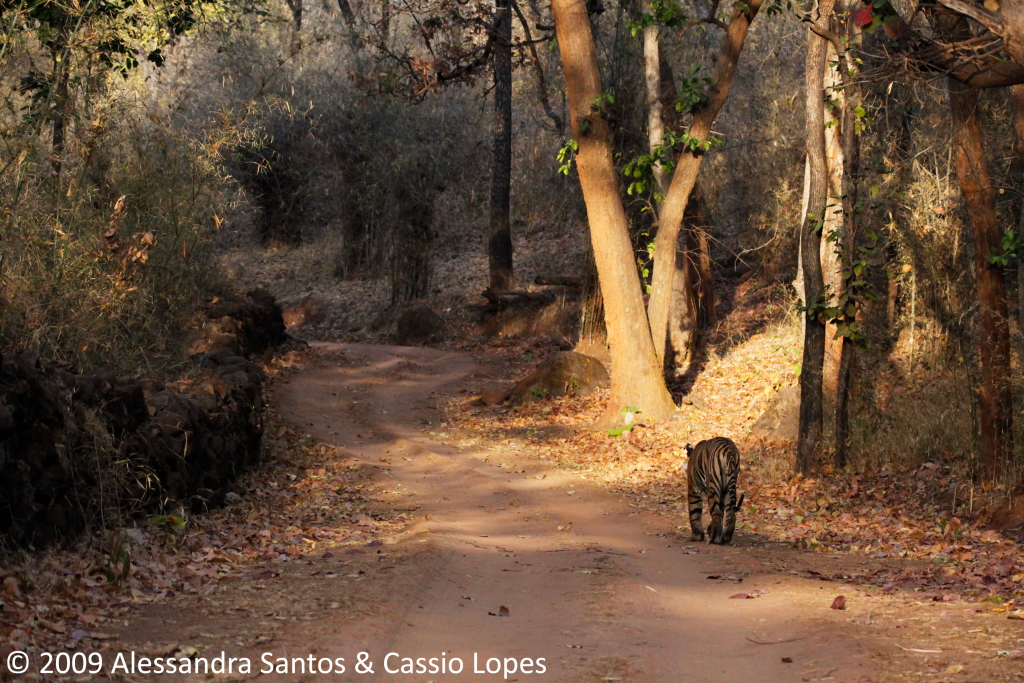

The light was so good; the sun was breaking into the leaves of the trees’ canopies highlighting the road with a collection of yellowish tones, and the tiger moving away by the road alternating between light and shade stripes.

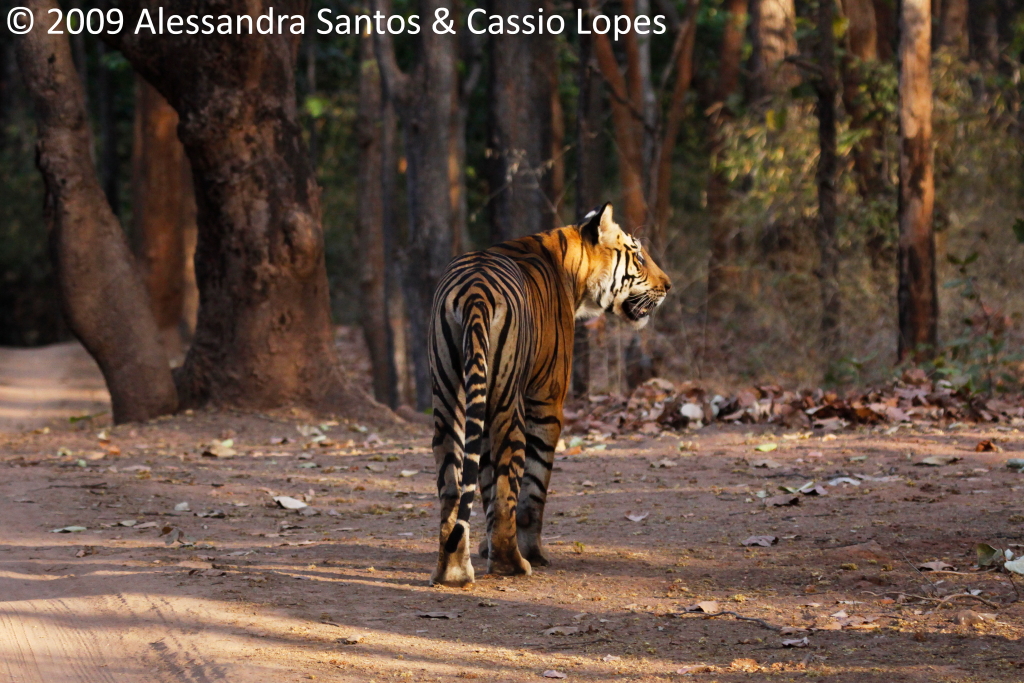
It was a young male tiger, about 20-months old, according to Raj. He was one of the Mirchani brothers, sons of B2, both already independent of their mother, the Mirchani Tigress. They are not very strong tigers, as they are still learning to hunt properly. Mirchani tigress still stays around the young brothers as a mentor, the guides told that she has even made a kill for them in the end of 2008 because they were not succeeding hunting themselves and they were becoming weak. A careful mother.

Mirchani boy kept walking along the track and refrained from time to time to try removing something stuck in his head. We could barely notice what he was trying to do, but then when he turned around to check on us, we could clearly see what was bothering him so much: a porcupine spine. Probably, in the night before, he killed a porcupine and got stung. We could notice some smaller stings in his fore leg.
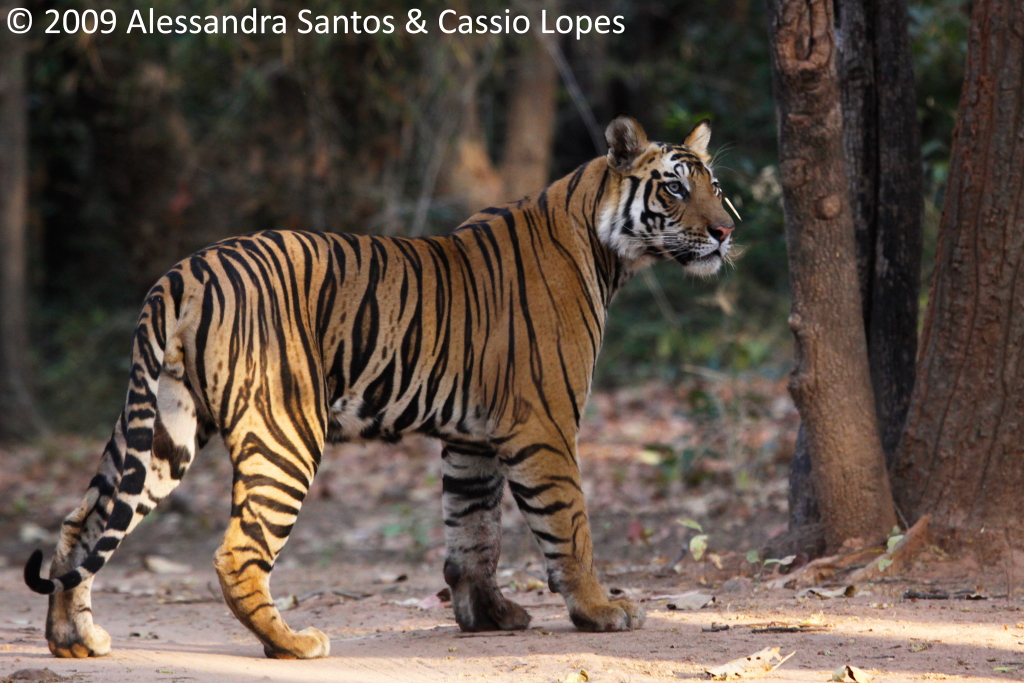
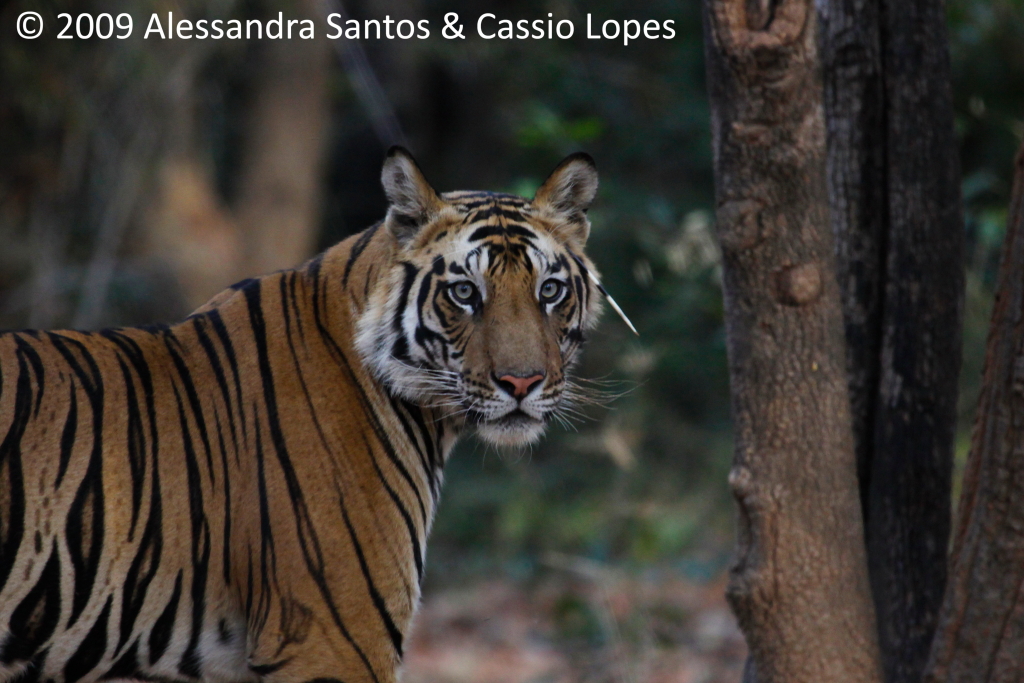
It is interesting to see how comfortable this tiger is with our presence, potentially the result of the regular contact with the tourists since he was born. He stretches and rests peacefully in the middle of the road, not bothering with our presence.
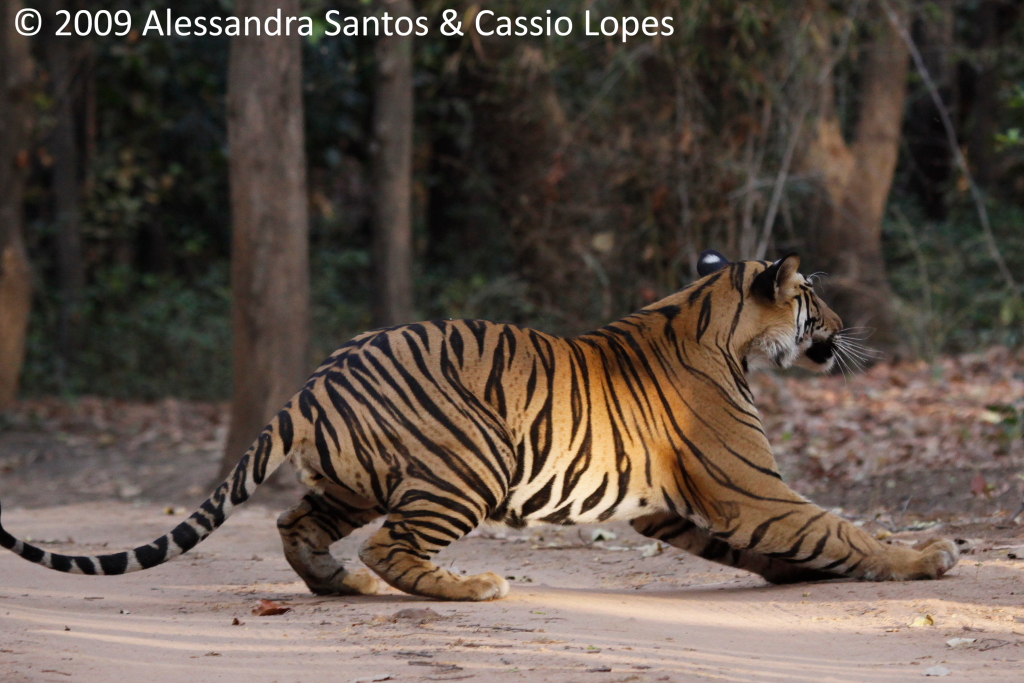

We enjoy the peacefulness of this moment, as there were no other jeeps with us. Again a private encounter intensively appreciated with no rush.
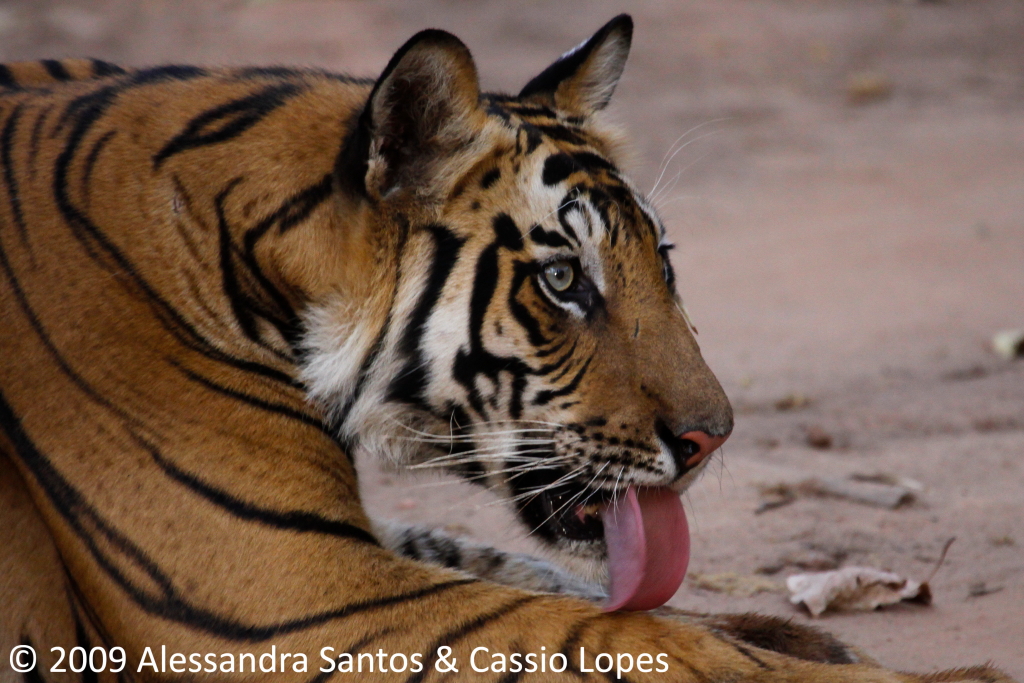

As time passes, we feel the temperature of the day rising, and so does he. He stands up once more to continue his walk, however he soon exits the road and seems to prefer entering the forest where the dense foliage still offered some shelter and kept the sunlight away.
It is time again to move on. We have still our mission assignment to accomplish: we must get to the Center Point to register. The sooner you get to the Center Point, the better position for the tiger show you grant (if there is any Tiger Show). I will explain: Tiger Show is when the mahouts of the park take you for a ride on the elephant to reach somewhere away from the road where a tiger is hidden. The jeeps are not allowed to go off-road in any circumstance, and Tiger Shows only happen in the morning. No Tiger Shows were happening that morning, though.
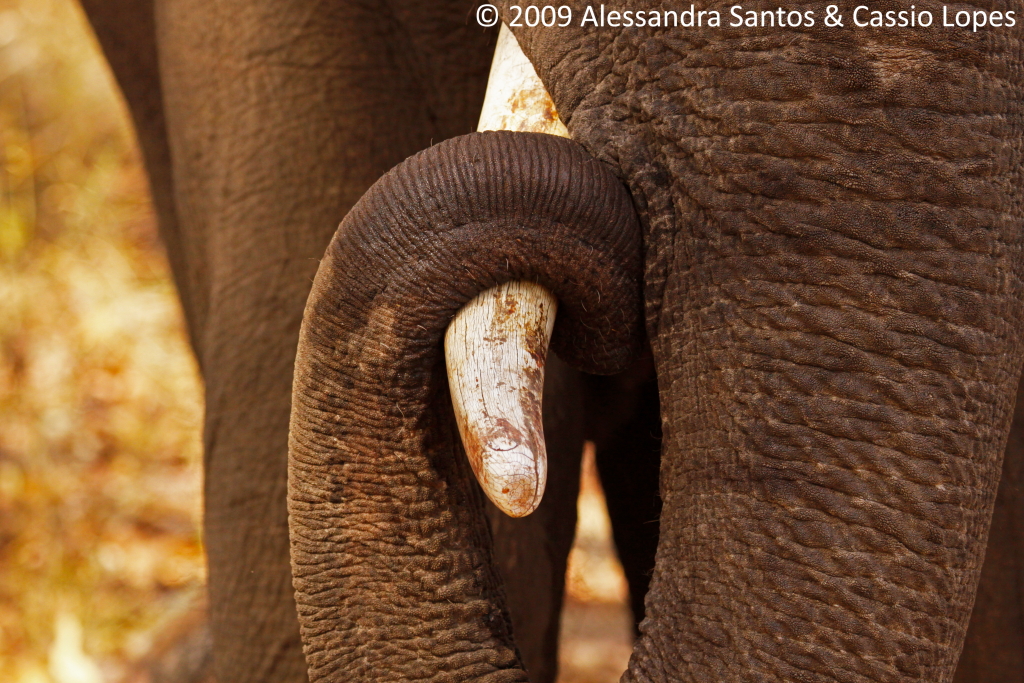
The morning drives are always strongly focused in going for the tigers first, because the early light and temperature are more suitable for the tiger to move. Tigers are nocturnal predators and after a night of activity, they will look for a place to rest during the hottest hours of the day. As we were there in the summer, the temperatures can rise above the 40°C and then the Tiger and the early morning time is the moment when they will look for a place to rest, usually a cave, the shade of a tree or a shallow riverbed, not far from water sources. That´s when you are able to see them roaming along the roads or crossing the open areas.
So after we spot the tiger we can relax and enjoy the local wildlife, and: What is that?! - Alessandra asks Sujan to stop abruptly. Is it a tiger cub?. We all look to the left of the road, in the place totally in the shade of big ficus trees with the ground fully covered with dead leaves. It´s a jungle cat! So difficult to spot during the day, the jungle cat is as much elusive as a tiger but not so much adapted to the day, so we could just observe it quickly moving deeper into the forest, but fortunately we had the camera preset for this kind of opportunity and we could take some frames of it. One more for the collection!

Other birds also have been spotted. For bird lovers India is a paradise, we can see nice colorful birds everywhere, even outside the parks. Some are very endemic to India and to a particular region of the country, and others recall us of African birds usually seen in East Africa, but other names – a proof that Asia and Africa were linked and shared the same wildlife species a long time in the past.
Indian Roller (or Blue Jay)

Changeable Hawk-Eagle
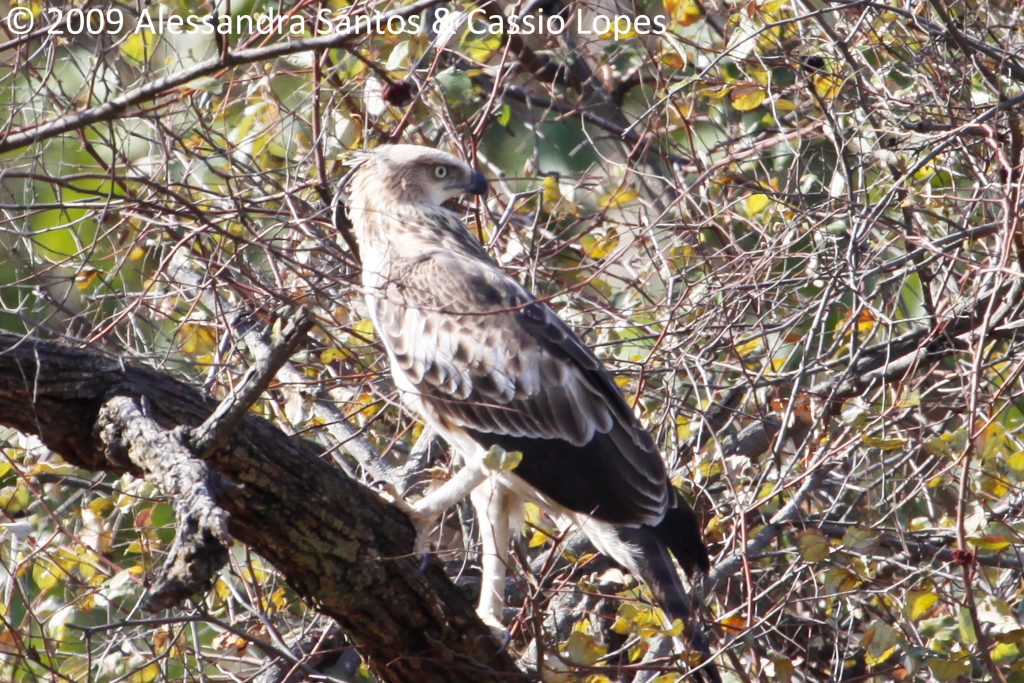
Approaching the time to leave the park (the park gate closes at 09:30am) we come across a wild boar, the Indian version of the African warthog. It crosses the road towards a gang of monkeys – very shy animal. We noticed it was quite wet, probably from diving in the waterhole just behind the bamboos, so we decided to check, and then we saw other animals also drinking at the edge of the waterhole, including a Langur monkey. Animals drinking water are always a good subject for photograph and despite the harsh sunlight we managed taking some good pictures…
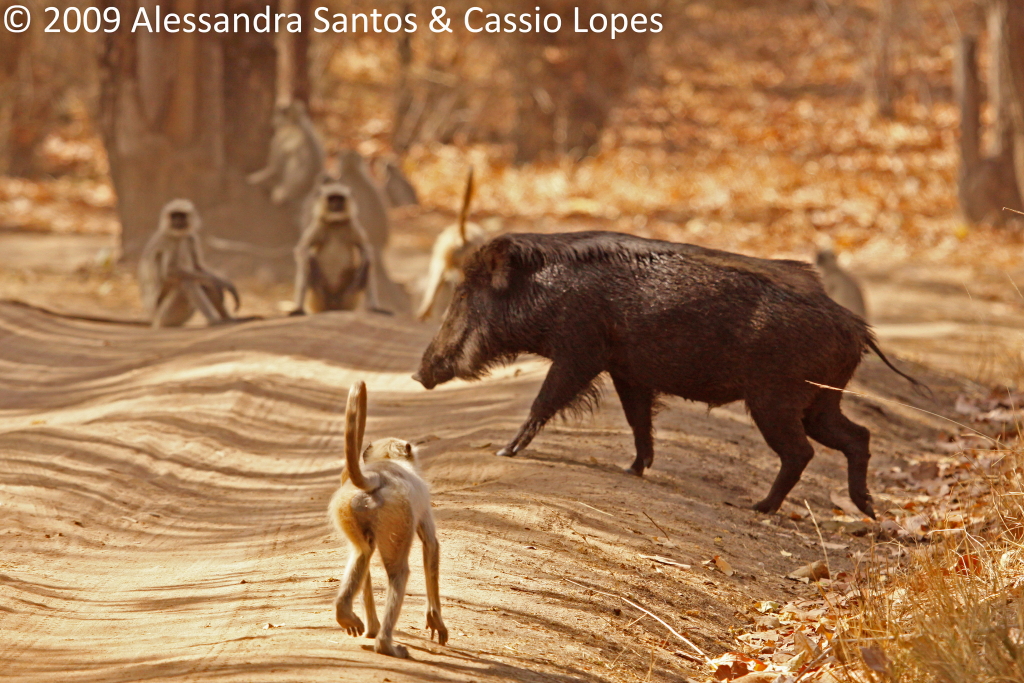

We have finish this fantastic game drive spotting some more Langur monkeys hanging around the Siddh Baba shrine, and one of them was carrying a baby. Look at this!
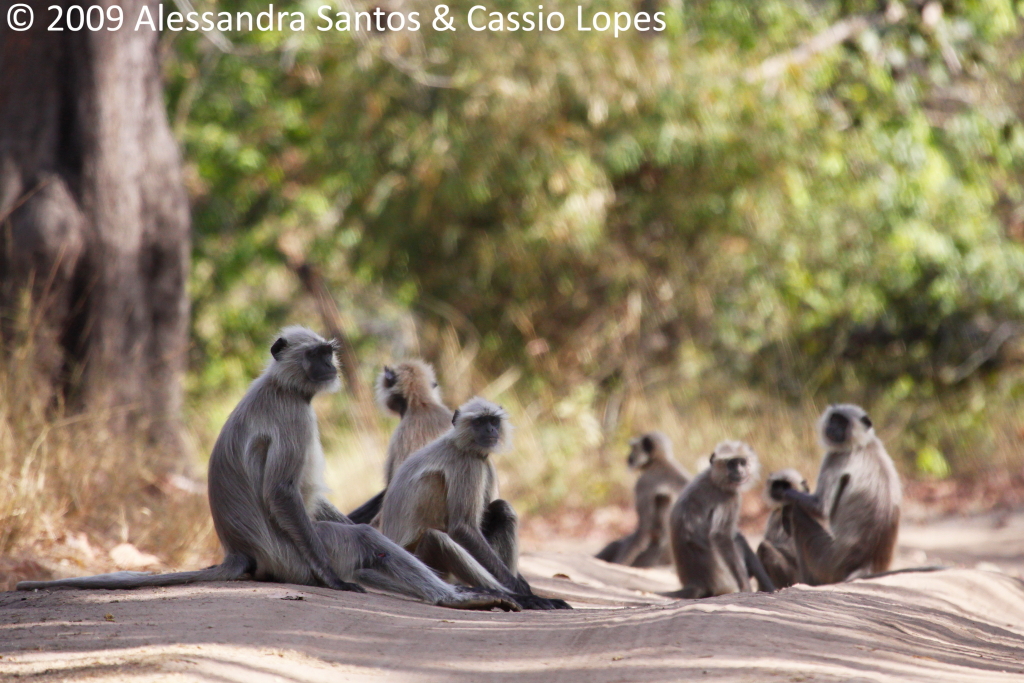
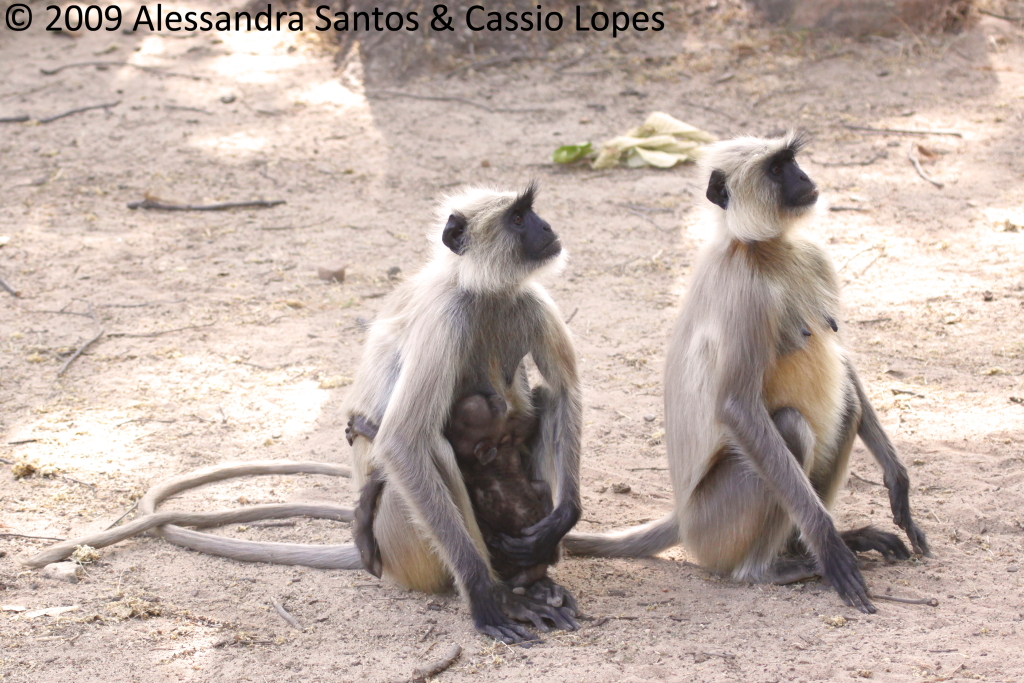
Note: you can click on the picture to take you to the original size picture in our Flickr album page, being better to see the photographs you like. Or if you may want to go straight to our Flickr page, please access the link Our Flickr Page





This is really something. I have only read about porcupine quills raising havoc in tiger's life but have never seen one afflicted with it. These are excellent photographs and, may I say, very rare. Wonderful.
ReplyDeleteI only hope that the mirchani tiger can get rid of these. Otherwise they fester and sometimes force the tiger to become a maneater. Jim Corbett has written about this extensively.
Avinash